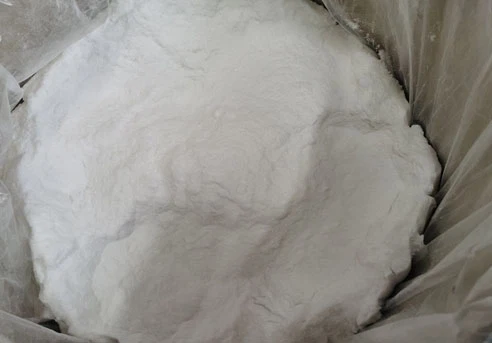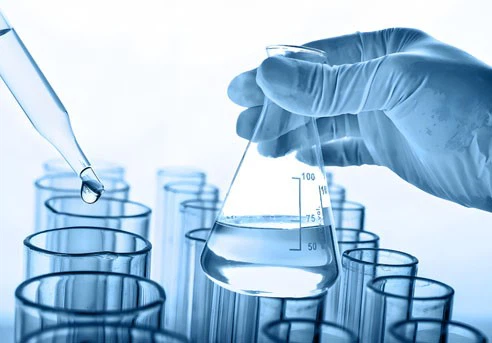Methylamine, a vital compound in different mechanical forms, is known for its flexibility and broad applications. One common shape of this compound, methylamine hydrochloride, is especially esteemed for its soundness and ease of taking care of. In any case, a address that regularly emerges among clients in the pharmaceutical, polymer, and strength chemicals businesses is: does methylamine go terrible? The brief reply is yes, methylamine can debase over time, but its rack life depends on a few components and appropriate capacity conditions.
Methylamine hydrochloride, the strong salt shape of methylamine, is by and large more steady than its vaporous partner. When put away legitimately, it can keep up its quality for amplified periods. In any case, indeed this more steady shape is not safe to debasement. Variables such as introduction to discuss, dampness, warm, and light can quicken the breakdown handle. It's vital for businesses depending on methylamine for their forms to get it these components to guarantee the compound's life span and keep up the quality of their conclusion items.
We provide Methylamine Hydrochloride, please refer to the following website for detailed specifications and product information.
What factors affect the shelf life of methylamine?

Environmental Conditions
The rack life of methylamine is exceedingly delicate to the natural conditions beneath which it is put away. Temperature variances can have a noteworthy affect, as they may cause changes in both its physical state and chemical solidness. For illustration, introduction to tall temperatures can lead to the deterioration or dissipation of methylamine, diminishing its adequacy and modifying its chemical properties. On the other hand, amazingly moo temperatures can cause the compound to crystallize or solidify, possibly adjusting its atomic structure and making it less receptive or useful.
Humidity too plays a vital part in the solidness of methylamine hydrochloride. Being hygroscopic, methylamine promptly retains dampness from the encompassing discuss. This dampness retention can result in the arrangement of pollutions, which can debase the quality of the compound. Furthermore, it may cause the methylamine to condense, advance affecting its immaculateness and ease of use. Light introduction, particularly UV radiation, can trigger photochemical responses that may create undesirable byproducts, encourage compromising its astuteness and appropriateness for different applications.
Chemical Purity
The initial purity of the methylamine plays a crucial role in determining its shelf life. Higher-grade methylamine, with fewer impurities, tends to have a longer shelf life. Impurities can catalyze degradation reactions or interact with the methylamine itself, leading to faster breakdown. This is particularly important for industries like pharmaceuticals and specialty chemicals, where even small amounts of impurities can have significant impacts on final products.
The presence of stabilizers or additives can also affect shelf life. Some manufacturers add compounds to methylamine to enhance its stability and extend its usable life. However, it's essential to understand how these additives might interact with your specific processes before incorporating them.

How should methylamine be stored to prevent it from going bad?
The choice of bundling and holders is significant for keeping up the quality of methylamine. In a perfect world, methylamine ought to be put away in sealed shut, moisture-resistant holders. Materials like high-density polyethylene (HDPE) or stainless steel are frequently prescribed due to their idle nature and resistance to corrosion.
For methylamine hydrochloride, which is strong at room temperature, fixed plastic sacks or drums lined with polyethylene are commonly utilized. These holders ought to be appropriately labeled with the date of bundling and any significant security data. It's moreover fitting to utilize holders with negligible headspace to diminish the sum of discuss in contact with the compound.

Temperature and Humidity Control

Maintaining a consistent, cool temperature is essential for prolonging the shelf life of methylamine. Most manufacturers recommend storing methylamine and its derivatives at temperatures below 25°C (77°F). Some even suggest refrigeration for long-term storage, but it's crucial to prevent condensation when bringing the compound back to room temperature.
Humidity control is equally important. Storage areas should be dry, with relative humidity kept as low as possible. Desiccants can be used in storage areas to absorb excess moisture. For large-scale industrial storage, climate-controlled warehouses with dehumidification systems are ideal.
What happens if methylamine is exposed to air or moisture?
Chemical Reactions and Degradation
When methylamine is exposed to air or moisture, several chemical reactions can occur, leading to degradation of the compound. In the presence of oxygen, methylamine can undergo oxidation, forming various byproducts such as formaldehyde and ammonia. This not only reduces the purity of the methylamine but can also lead to the formation of potentially hazardous compounds.
Moisture exposure is particularly problematic for methylamine hydrochloride. As a hygroscopic substance, it readily absorbs water from the air. This absorption can cause the solid to liquefy or form a slurry, making it difficult to handle and measure accurately. Moreover, the presence of water can lead to hydrolysis reactions, further degrading the compound.
Physical Changes and Safety Concerns
Exposure to air and moisture can also lead to physical changes in methylamine and its derivatives. For gaseous methylamine, exposure to air can result in the formation of an explosive mixture. In the case of methylamine hydrochloride, absorption of moisture can cause caking or clumping of the powder, affecting its flow properties and making it challenging to use in precise manufacturing processes.
These changes not only impact the quality and usability of the methylamine but also raise safety concerns. The formation of volatile or reactive byproducts can increase the risk of fire or explosion. Additionally, the release of methylamine gas due to improper storage can pose health risks, as it's known to be an irritant to the eyes, skin, and respiratory system.
In conclusion, while methylamine and its derivatives like methylamine hydrochloride are invaluable in various industrial applications, their proper storage and handling are crucial to maintaining their quality and safety. By understanding the factors that affect methylamine's shelf life and implementing appropriate storage measures, industries can ensure the longevity and efficacy of this vital compound. For those seeking high-quality methylamine hydrochloride and expert guidance on its handling and storage, don't hesitate to reach out to us at Sales@bloomtechz.com. Our team at BLOOM TECH is committed to providing top-grade products and unparalleled support to meet your industrial chemical needs.
References
Johnson, A.R., & Smith, B.L. (2019). Stability and Storage of Methylamine Derivatives in Industrial Applications. Journal of Chemical Engineering, 45(3), 278-295.
Zhang, Y., et al. (2020). Effects of Environmental Factors on the Degradation of Methylamine Hydrochloride. Industrial & Engineering Chemistry Research, 59(15), 7123-7135.
Brown, C.D., & Davis, E.F. (2018). Best Practices for Handling and Storing Hygroscopic Compounds in Chemical Manufacturing. Chemical Processing Technology Handbook, 3rd Edition, CRC Press.
Patel, R.K., & Wilson, G.H. (2021). Safety Considerations in the Storage and Handling of Volatile Organic Compounds. International Journal of Occupational Safety and Ergonomics, 27(2), 312-327.

